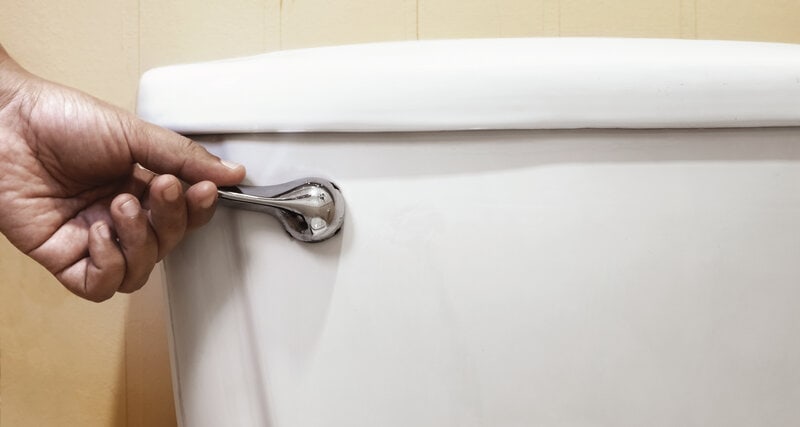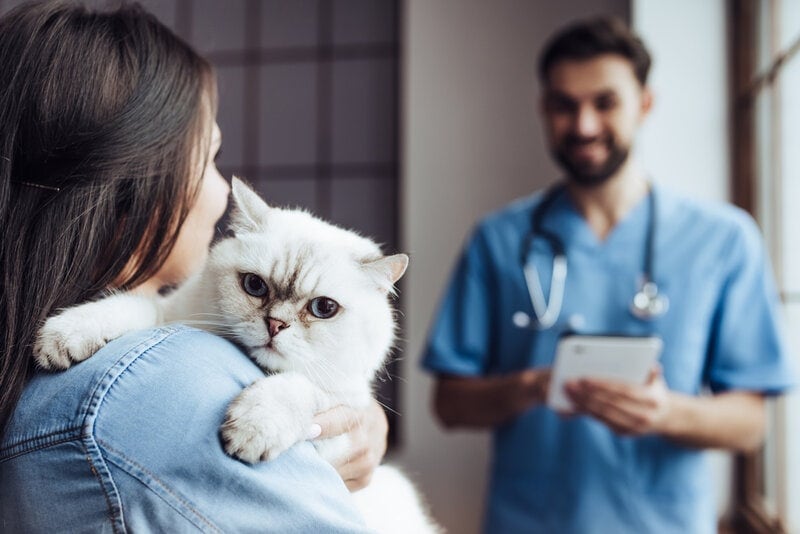How Much Does a Teacup Cat Cost? 2024 Price Guide

Updated on
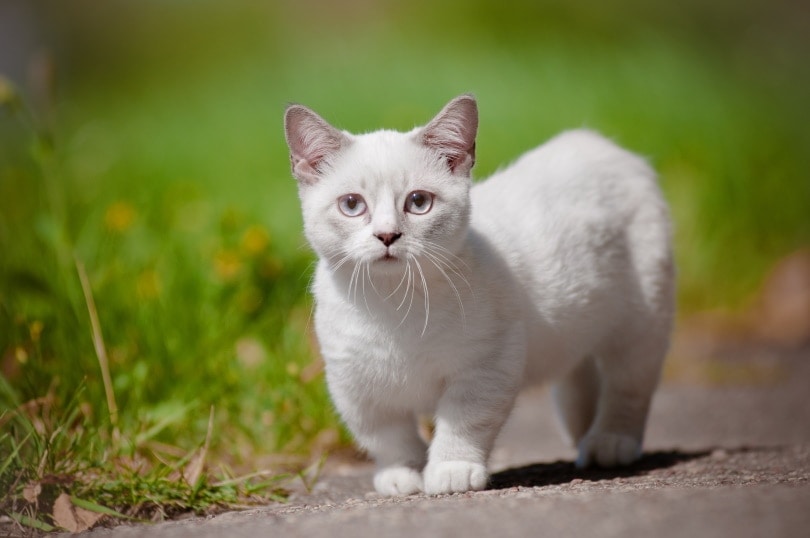
You’ve probably heard the term before, perhaps describing a small Poodle. For cats, the word “teacup” doesn’t refer to a specific breed. Instead, it’s a descriptor that sellers may use for any felines that are little. Some breeds are tiny compared to the average 8–10 pounds for a domestic cat. Munchkin kitties are less than 9 pounds. However, there is no definitive standard for what teacup means.
Before bringing one home, you want to make sure you are ready for the financial responsibility of being a pet parent. After the initial costs, you should be prepared to spend $120–$400 per month.
Bringing Home a New Teacup Cat: One-Time Costs
Your initial purchase for that first year of ownership of a teacup cat will be the most expensive one. There is the price of getting a pet. If it isn’t spayed or neutered, you’ll have that expense. You also have to take into account the things you’ll need to buy to get your kitty set up in its new home. Those products will add up quickly.
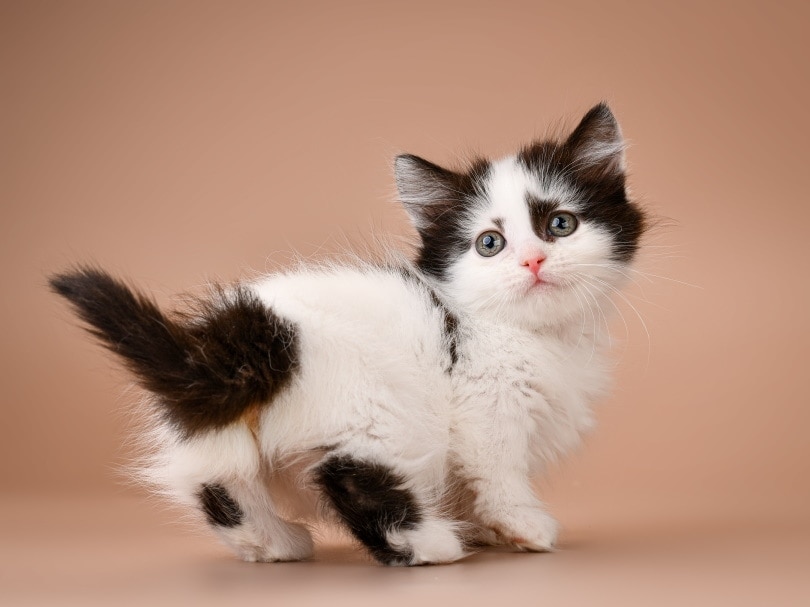
Free
Getting a teacup cat for free sometimes turns out to be the costliest option of all. The chances are that the kitty hasn’t received any veterinary care. A reputable seller would at least try to recoup their costs for deworming and the first vaccinations. The lack of medical attention is a red flag, given the pet’s small size. They are more vulnerable to disease and parasites as a result.
Adoption
$0–$200
Adoption fees vary widely, depending on the services that are included in the price. Remember that many organizations rely on donations and volunteers. The costs are often higher if spaying or neutering is included. Many facilities require this surgery. While our range is $200 at the high end, you may find that it can cost $500 or more.
However, don’t despair. Often, veterinarians charge adoption agencies reduced fees, which the organization can then pass the savings on to you. After all, the most important thing is finding a home for the teacup cat. When you take this info into account, this method is probably the most affordable of the three.
Breeder
$100–$2,000
Buying directly from a breeder can offer significant advantages, assuming you’re dealing with a reputable seller. Bear in mind that pets that aren’t normally small are selectively bred to get to that size. That often involves mating undersized parents. They are that size for a reason. That fact often plays out in an increased risk for chronic health conditions later in life.
If you go this route, we recommend verifying the vet care that the kittens have received. Make sure they are up to date on all necessary vaccinations and deworming. The peace of mind is worth the added cost.
Initial Setup and Supplies
$685–$1,300
Many of these expenses are one-time costs, such as spaying. Others, like veterinary care, are ongoing. These prices don’t factor in the purchase price for your teacup cat, which, of course, varies widely. The takeaway message is that pet ownership is a responsibility that includes financial obligations. That’s why it’s imperative to understand what it may entail before you make a commitment.
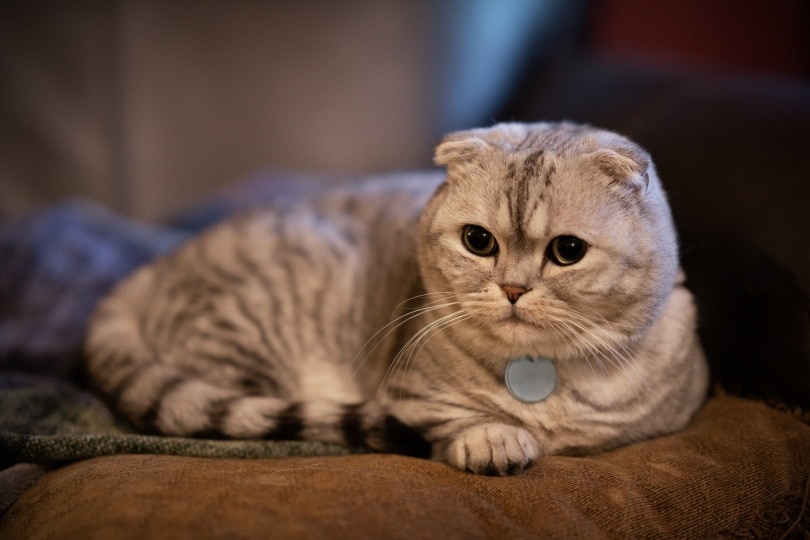
List of Teacup Cat Care Supplies and Costs
| ID Tag and Collar | $15 |
| Spay/Neuter | $100–$400 |
| Microchip | $45–$55 |
| Veterinary Care | $100–$300 |
| Bed | $30–$100 |
| Pet Insurance | $250 |
| Grooming Supplies | $30 |
| Litter Box | $30 |
| Litter Scoop | $5–$20 |
| Toys | $30 |
| Carrier | $40 |
| Food and Water Bowls | $10–$30 |
How Much Does a Teacup Cat Cost Per Month?
$120–$400 per month
Several factors go into the monthly cost of owning a teacup cat. As you’ll see, there is often some wiggle room on many aspects of your pet’s care. There are also some surprises, which can add up to some serious cash. Often, they’re tied to your pet’s health, which makes them harder to predict.
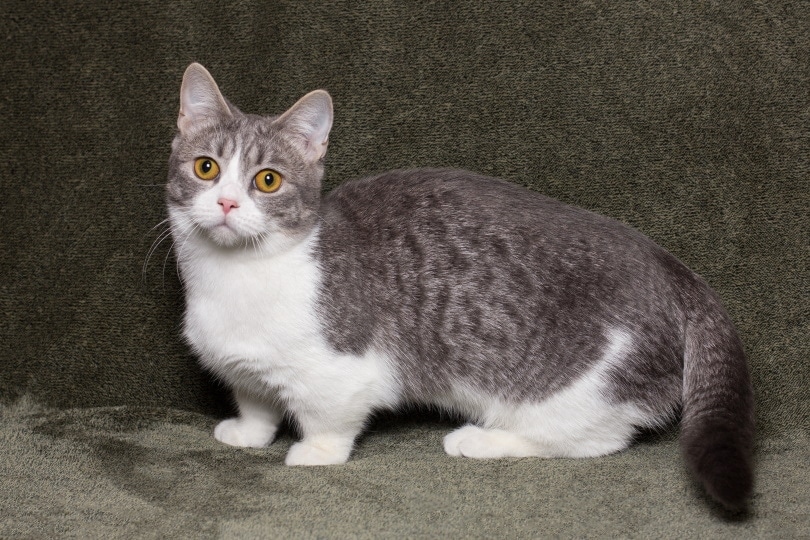
Food
$20–$100 per month
This expense will vary, depending on your teacup cat’s health. We mentioned an increased risk of chronic health conditions with these pets. That may translate into a special diet, which is considerably more expensive than maintenance products. The essential thing is to offer your pet the right diet for its life stage and adult size. The dietary needs of kittens are different than adults.
Grooming
$0–$50 per month
Unless you’re planning on getting your cat groomed into one of the fad trends, such as the lion cut, your costs on this score are negligible. Of course, cats take care of themselves on this score. The only things you may need to buy are a brush and a nail trimmer. Having both will keep these costs low and provide bonding time for you and your pet.
Healthcare and Vet Visits
$10–$50 per month
Your cat’s health will determine what you’ll pay per month. After the first year, you’ll likely settle into an annual vet visit to update vaccinations and check your pet’s vitals. That expense will, in turn, rest with whether your kitty is an indoor animal or one that goes outside. If the latter is the case, your vet will likely recommend additional vaccinations because of their increased risk of other diseases.
It may also mean year-round flea and tick prevention, heartworm medication, and other miscellaneous costs, such as deworming. That makes a strong case for keeping your teacup cat indoors.

Pet Insurance
$9–$40 per month
Pet insurance is a wise idea since it can cover at least a portion of your annual expenses. However, you may find that it’s more difficult to get it for a teacup cat because of the added health risks. These kitties have higher chances of developing chronic diseases, such as heart problems, neurological issues, and other conditions that may affect whether you can get insurance.
Environment Maintenance
$55–$100 per month
Having a pet costs money. There’s no getting around it. For cats, the main maintenance costs are litter and its upkeep, particularly if you keep it indoors. Most expenses are replacement costs since many things like liners are disposable with limited use. It’s essential to balance the expense with the ease of keeping things clean. You may find that they’re worth the added cost.
| Litter box liners | $15/month |
| Deodorizing spray or granules | $10/month |
| Cardboard scratcher | $30/month |
Entertainment
$15–$35 per month
Cats are intelligent animals. Entertainment is also a function of your pet’s mental health. You’ll likely find that your kitty will get bored with its toys after a while. Experienced pet owners figure out quickly that you need to swap them out when that happens. They’ll likely forget about them and act as if they are something new when you put them out again. That will save you some money in the long run.
You can make the task easier with subscription-based offerings. They’ll take care of selecting the items, often including things you may not have considered. Many companies offer tier-based pricing so that you can choose the plan that works best for you.
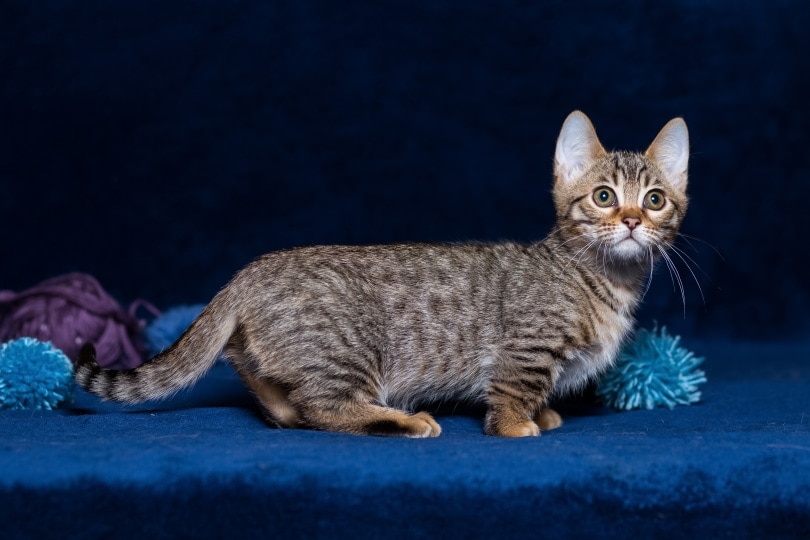
Total Monthly Cost of Owning a Teacup Cat
$120–$400 per month
Of course, there are a lot of variables in determining the monthly cost of owning a teacup cat. Much of it rests with the health of the pet. As we’ve discussed, it can play a pivotal role, making this kitty more expensive to own. Then, there’s your part in the tally. We understand that some people like to indulge their animal companions. The pet industry is more than willing to step up to the plate.
Americans love their pets. That’s why industry experts predict that the market may reach $275 billion by 2030.
- See also: How to cut the costs of owning a cat?
Additional Costs to Factor In
Many cat owners opt to hire a pet sitter instead of boarding their pet when they vacation if bringing your teacup cat along isn’t an option. It’s certainly less stressful than taking your kitty to an unfamiliar place, to say nothing of the trip in the carrier. You can expect to pay between $20–$40 per visit, depending on your pet’s needs. Some will charge more if meds or overnight stays are part of the equation.
Whenever you talk about felines, you also have to address the possible damage they can do, even with a pet as small as a teacup cat. It’s worth noting that the American Veterinary Medical Association considers declawing as a last resort after trying other deterrent methods. The cost will vary, depending on whether laser surgery is an option. It can run between $140–$500.
Hopefully, you’ll never need this service, but emergency vet care is something to keep on your radar. Inevitably, something happens when your regular clinic is closed. You can easily expect to pay $100 or more just for walking in the door. You’ll also have to plan on transporting your pet to your veterinarian once their office is open.
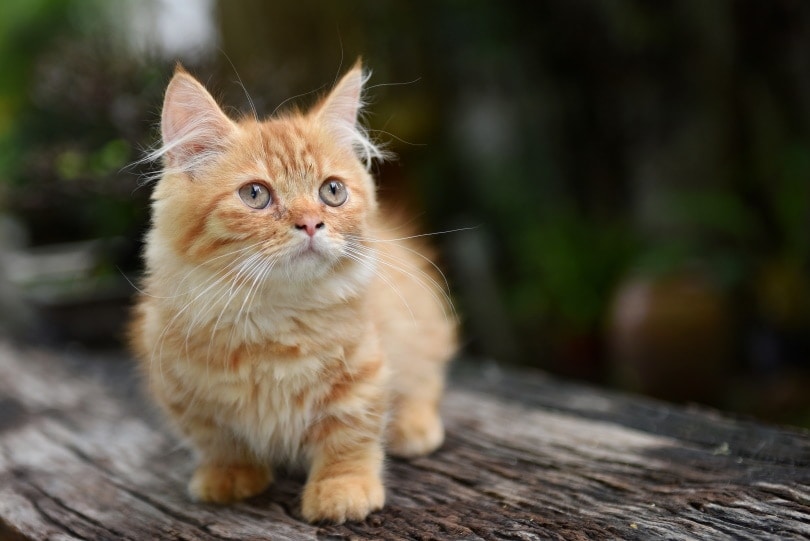
Owning a Teacup Cat On a Budget
We strongly urge you to avoid skimping on food or veterinary care as a way to save money. Both are essential for the good health of your pet and its quality of life. Better options for cutting costs are choosing more affordable toys or making them yourself. You can also grow catnip easily in your backyard. You can even gather it at a nature center or trail, assuming it’s permitted.
The bottom line is that owning a pet is a financial obligation. It’s going to cost money to provide your cat with the things that it needs. That’s why it’s imperative to consider the costs of owning an animal before you commit to the responsibility.
Saving Money on Teacup Cat Care
Another way to save money owning a teacup cat is to consider every extraneous purchase. That includes toys, treats, and choices of maintenance items. You don’t have to buy the fanciest cat bed or the litter box with the LED alert to clean it. Also, you can use baking soda to keep the litter box clean instead of the perfumy granules.
Conclusion
The primary cost of owning a teacup cat comes in that first year with the purchase of your pet, initial vet appointments, and setting it up in its new home. The monthly expenses depend on the health of your kitty. Chronic diseases can ramp up the costs quickly with regular testing and medications. The best way to get a handle on them is to choose healthy animals from reputable sellers.
Doing so can help you avoid some of the unexpected expenses that come with treating chronic medical conditions. There are also several ways to keep your costs down that don’t necessarily impact your pet’s quality of life. They include common sense things, such as feeding your cat a nutritious diet. The takeaway message is to provide your teacup cat with everything it needs to get the best start in life.
Featured Image Credit: otsphoto, Shutterstock


